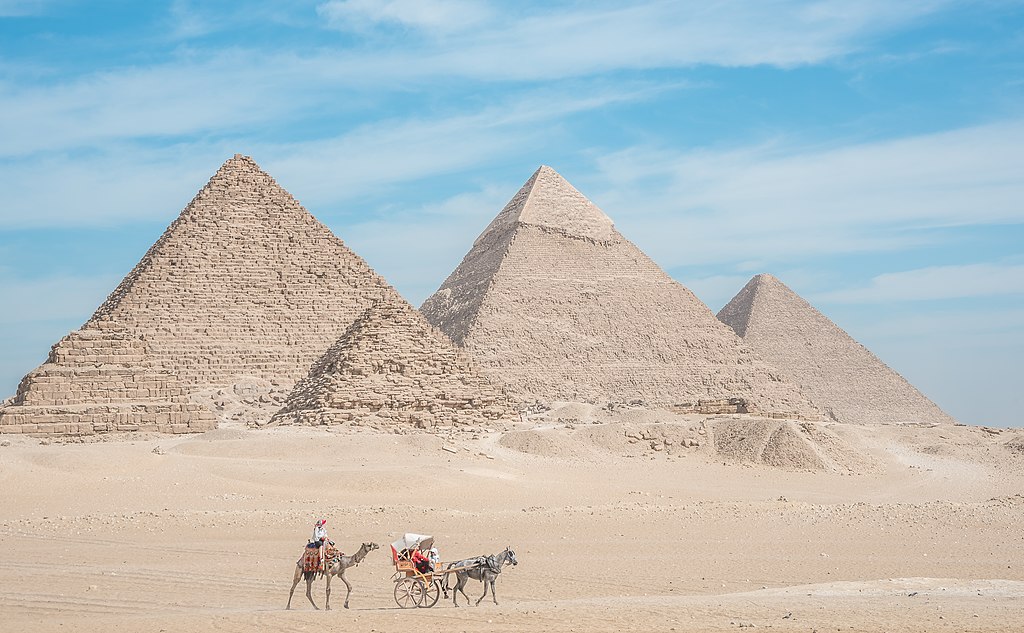Artificial Intelligence (AI) lets imagination soar. It can create wonderful, magical worlds where unicorns frolic with polar bears. It can also create terrifying dystopian scenes, where monsters are lurking behind every corner. And when an architectural historian gets a hold of AI, naturally their first question is, “What will the famous landmarks of the world look like hundreds of years in the future?”
AI cannot be expected to be fully accurate in its output; it’s not a predictive modeling software. Using it is more like a fun shake of a Magic 8 Ball. Yet asking AI to imagine the future of these buildings has created some surprising results, ranging from hilarious to terrifying. The AI generated creations below show the potential future of the world’s treasures. But these visions serve as a warning and a call to arms, asking what kind of future society wants for its cultural treasures.

Past: Great Pyramids of Giza (c. 2550 to 2490 BCE)
Ancient Egypt is famous for the amazing architecture of its tombs, particularly its pyramid construction. But pyramids were only used for a relatively fleeting period of Egypt’s history. During Egypt’s Old Kingdom, tomb and temple construction shifted from earlier mastaba to a stepped pyramid (more like several mastaba stacked on top of one another), then to smooth-sided pyramid. The greatest champion of this movement is arguably Snefru, who attempted three different pyramids; One collapsed, another had strange bend, and the third, the Red Pyramid, sat quite wide. But Snefru’s son Cheops would learn from these and create the Great Pyramids that would become the symbol of Ancient Egypt well after tomb building moved into rock cut tombs in the Valley of the Kings. Its once polished white limestone covered sides have been stripped to the golden structural stone, but Cheops’ Great Pyramids still, after thousands of years, represent Egypt’s might.

